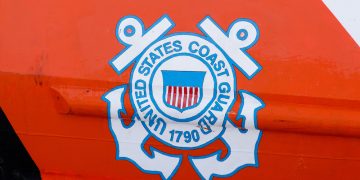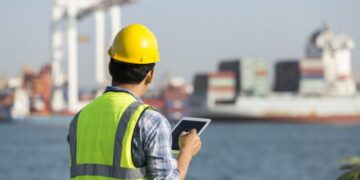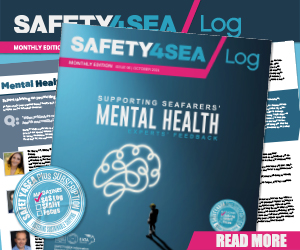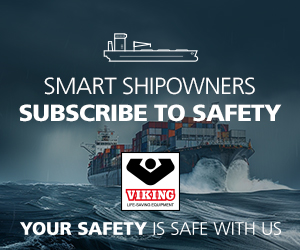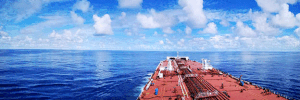Øssur Hilduberg, Head of the Danish Maritime Accident Investigation Board, gives an interesting insight on his role and the process of initiating and leading maritime accident investigations.
What are the main functions of DMAIB?
At DMAIB, we investigate accidents related to Danish merchant ships in national and international trade and foreign ships in Danish, Greenland and Faroese territorial waters. Overall, the purpose of DMAIB is to investigate accidents to gain information, not only about specific accidents, but also to create knowledge and learning about the effectiveness of the existing strategies for mitigating risks at sea.
Please tell us about your experience in the shipping industry and what attracted you to the investigation of accidents:
It was a coincidence that I found my way into accident investigation. I grew up in the Faroe Islands and come from a family of fishermen. After having been on fishing vessels I soon realised that it was not for me and I therefore opted for the comfortable life on large merchant ships. After getting my certificates as master mariner and marine engineer I sailed with a variety of ship types (oil tankers, gas tankers, container ships and offshore supply ships). As it happens for many seafarers, I had children and went ashore to work for the maritime administration. I am still fascinated with the fishing industry and how fishermen manage to work under the harshest of circumstances where the ship only serves as a platform for the highly specialised work of deep sea fishing. Unfortunately, we investigate too many fatal accidents on fishing vessels.
What are your key responsibilities as Head of DMAIB?
Besides the administrative managerial tasks my key responsibility is to deliver accident investigation reports of a high quality in terms of providing credible explanations for why a given accident occurred. Maintaining the quality of the accident reports entails having a continuous focus on developing new and updated methods for collecting data and ensuring that the analysis is made on the basis of contemporary knowledge about risk and safety.
Maritime accident investigations are complex. What are the main challenges when initiating a case?
Accident investigations typically have three stages; collecting data, analysing data and report writing. However, these stages are integrated, as we do not have a full view on what data to collect before we decide how the analysis will be made. We are usually in the process of collecting data until the final report is ready for publication. Each stage of the investigation poses its own challenges. When collecting data the main challenge is getting timely access to data from various sources such as the accident site, involved seafarers and back office personnel before they have a chance to talk to each other. In the stage of analysing accident data it takes quite a lot of training to avoid making some of the common analytical faults. For example, using counter-factual reasoning (the crew should have or could have done something), using hindsight biased data, using over-simplified linear accident models or more importantly only analysing data from the accident site and thereby overlooking the data collected from the back office. It is a common problem in accident investigation that the investigators are experienced seafarers who are biased towards other seafarers’ behaviour. This is typically seen when investigators are evaluating the behaviour of the seafarer involved in accidents which is not the intention of accident investigation. Designing the report is always a challenge in terms of what data to present and what data to omit, having in mind that different accident reports have different target audiences with different needs, as relatives to seafarer or passengers who have perished, seafarers, shipping companies and authorities require different levels of detail on various subject matters. At DMAIB we are continuously discussing how to design the report so it makes sense for the reader.
Each investigation is different however, what is the average lead-time of an investigation?
The national regulation based on a EU directive states that the investigation should be concluded within twelve months. However, we typically publish a report within eight months after the accident depending on the complexity of the investigation. The factors that cause a delay to an investigation are not the collection of data and
the analysis, but the consultation period were the involved parties are concerned about the content of the report. Furthermore, there can be bottleneck problems if we have several accidents occurring within a short time span. Nevertheless, we do our outmost to publish the report as quickly as possible because the involved organisations and individuals deserve to have the closure that an accident report can provide.
Fact finding methods and setting conclusions are crucial in any investigation. How does the industry learn from these results in order to help prevent future accidents?
At DMAIB we have found that the maritime industry is not particularly a homogenous group in terms of the level of knowledge and understanding about safety and risk mitigation. Therefore, we try to design the report so it makes sense for the organisations involved in the given accident. It is inherently difficult to address safety issues which are recognisable for the industry as a whole, because the organisations do not have the same concerns. However, we have made a safety report about the problems with proceduralization of marine safety which seemed to resonate with many different stakeholders within the industry. In the future, we intend to publish similar safety reports about general safety related subject areas, e.g. accountability management, just culture and near-miss data. These reports might be a better way of communicating the accumulated learning we get from accident investigations.
What is your view on near-miss events and their importance when gathering preventive data?
Fortunately, major accidents have become few and far between in most shipping companies. In the absence of accident data it has become increasingly necessary to collect other kinds of data to identify problems with safety.
The basic idea of near-miss reporting is that the back office functions can elaborate reporting systems to learn about what is happening on the ships – the aim is organisational learning with the purpose of avoiding accidents with serious consequences. Even though the idea of near-miss reporting is well intended, it seems to have very little effect or at times have adverse effects.
There are a number of problems areas and I will highlight three of them. Firstly, there is not a stable definition of what a “near-miss” is, which separates normal work problems with something which is reportable. The lack of a definition which can be operationalised creates a reporting practice which is driven by the ship trying to meet reporting demands, resulting in reports about everyday events with little potential for learning. Secondly, our investigations have shown that there is a clear under-reporting of events which we know will occur, in events such as near collisions and groundings, falling asleep on the watch, assembling engine parts wrong etc. These events are kept secret because of the lack of accountability management within shipping companies. Thereby, the reporting system gives a distorted image of the operation of the ship – hiding the structural problems that nobody is talking about. Thirdly, the idea that near-misses are precursors of serious accidents can be brought into question. That near-misses have a predictive value is an idea which largely is derived from the work of Herbert Heinrich which was published in 1929. Since then knowledge about safety has evolved about how accidents occur (that causal factors for low probability/high consequence events are rarely represented in the analytical data on incidents that occur frequently) i.e. there is no common causal link between reported incidents and very serious accidents.
What advice would you provide those at sea about the compliance of SOLAS regulation?
As a bureaucrat I am reluctant to give advice to seafarers on subject matters they are experts on. There is a tendency that seafarers that go ashore to work for various organisations and authorities believe that experience is like wine – which gets better the older it is. I am not an expert on how to govern a ship, but I am an expert on how to investigate accidents. In my experience as investigator, I have found that seafarers are not that interested in SOLAS or any of the other conventions, because they are busy with other more important and pressing matters on the ship. One should also note that in reality most shipmasters are working in an environment of distributed authority – between the charterer, the ship management organisation, and the owners. In the continuous communication with the shore-based technical and commercial management, the master is subjected to other forms of authority that challenge the shipmaster’s legitimised authority on board. In reality most shipmasters have a diminishing command of the ship and its resources. Compliance with the conventions is no longer a matter for the shipmaster to decide on, but an administrative back office concern in technical departments.
Many initiating a maritime career aspire to be master mariners. Do you feel trainees are fully aware of the responsibilities and skills required for this role?
I am very positive about the trainees that I meet in various lectures and during investigations. They are embracing the new technology and have genuine interest in how it works and what the weaknesses are – they are being trained for the increasing complexity of ships. The trainees are therefore better prepared to the reality of modern shipping than the more senior officers. More importantly, I find that they are more pragmatic about the life at sea and some use it as a stepping stone for doing something else later in their professional life. These changes are not necessarily welcomed by the most senior officers and some resistance or scepticism can be expected. Learning the skills and getting the sense of responsibility is primarily a task for the shipping companies and the on board crew. Their attitude towards training is vital for the success of having qualified junior officers.
Above interview with Mr Hilduberg has been conducted by Gibraltar Shipping and is reproduced here with kind permission.
The views presented hereabove are only those of the author and not necessarily those of SAFETY4SEA and are for information sharing and discussion purposes only.
[divider]
 Øssur Hilduberg is the Head of the Danish Maritime Accident Investigation Board (DMAIB), an independent unit under the Danish Ministry of Business and Growth, responsible for investigating maritime accidents and accidents to seafarers. Øssur has a broad maritime and technical background combined with knowledge within safety science, giving us an interesting insight on his role and the process of initiating and leading maritime accident investigations.
Øssur Hilduberg is the Head of the Danish Maritime Accident Investigation Board (DMAIB), an independent unit under the Danish Ministry of Business and Growth, responsible for investigating maritime accidents and accidents to seafarers. Øssur has a broad maritime and technical background combined with knowledge within safety science, giving us an interesting insight on his role and the process of initiating and leading maritime accident investigations.









